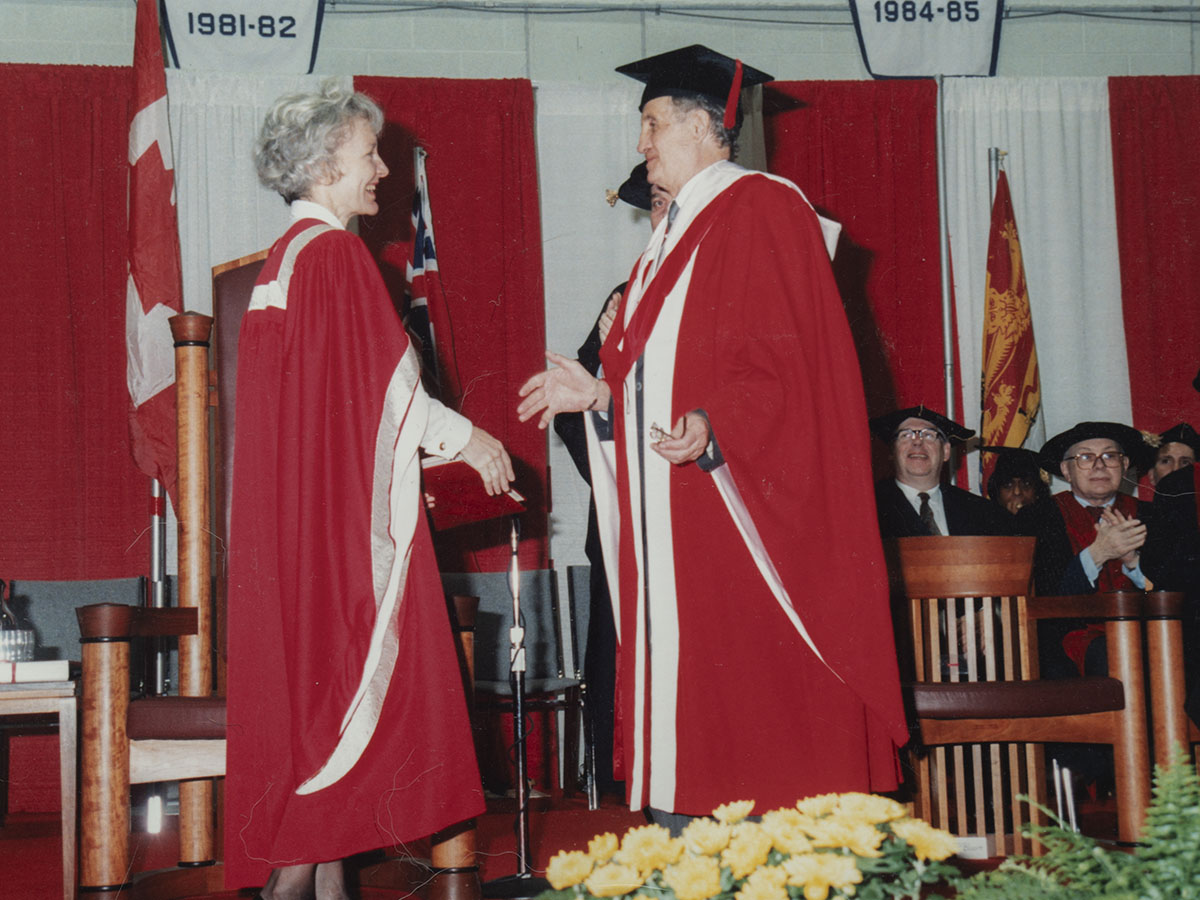↑ ↓ ↑ ↓
RONALD L. BLOORE
NOT WITHOUT DESIGN
by Terrence Heath
Chapter Three
PROFESSOR OF ART HISTORY
1966-1985
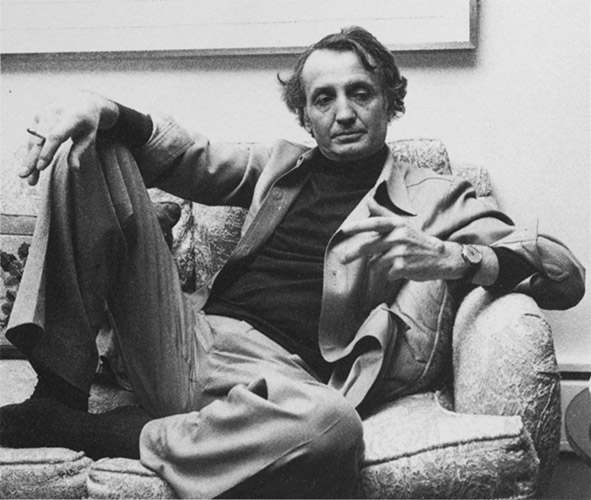
←CH.1 ←CH.2 CH.4→
↑ ↓ ↑ ↓
One of the peculiarities of making art in the 20th century is that each artist has had to define what art is. Schematically (and simplistically) seen, this need to define, even invent, is a result of the release of the making of art from communal function, as, for example, in its role in sacral society, and the development of art as an autonomous activity. Perhaps the most succinct statement of the resulting dilemma that every artist has had to face can be found in the opening sentence of Theodor W. Adorno's Aesthetic Theory: “It is now taken for granted that nothing which concerns art can be taken for granted any more: neither art itself, nor art in its relationship to the whole, nor even the right of art to exist."(1) The persistence of this self-criticism throughout the century perhaps helps to explain both the volubility of art styles and the dominant role of art theorists in the history of 20th century art. Writing on art has been caught on the horns of a dilemma: is the artist's intention central to understanding the art, or is the art a cultural “text” which has to be released from the authority of the artist and opened to the multiple readings of the society? Or, are the curator and the critic the real artists of the 20th century, as has been claimed by some?
Throughout his life, Ron Bloore has refused to explain his own work or to discuss his specific aims in creating it. While many other artists were at great pains to explain what they were doing, Bloore steadfastly kept silent about his art. At the same time, he has spoken extensively about the nature of art itself, the assumptions and presumptions of art history and the particular problems of art making in Canada. In effect, he has denied art writers the shortcuts to understanding his work, but he has offered extensive commentary which could guide them in understanding, if not his work, then, at least, his intentions.
Many of these talks, however, were given to students at York University in his position as Professor of Fine Arts or on the occasion of conferences and meetings. He published very little. It is only by drawing together his few published articles, his extensive lecture materials and his addresses that the full scope of his thought can be appreciated. Central to all his thought is the basic 20th century question, What is art?
↑ ↓ ↑ ↓
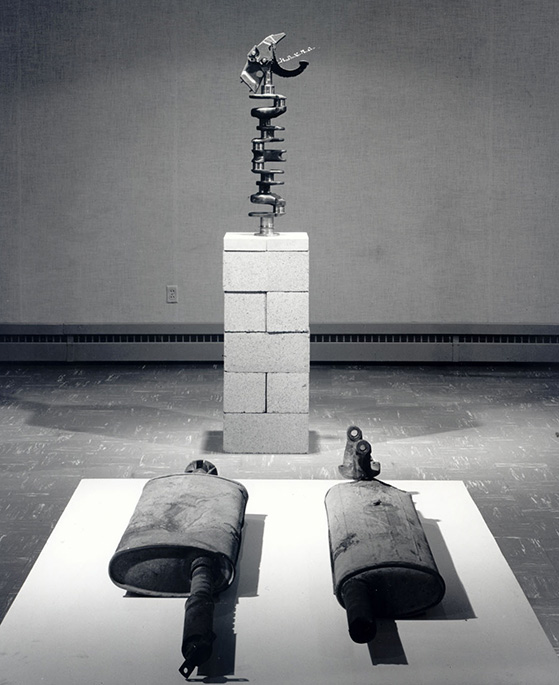
1960, three dimensional studies by Win Hedore
What is Art?
There is no doubt that, if Bloore were asked the question posed by Hans-Georg Gadamer, “Is art always art and nothing but art?,” he would unhesitatingly reply, “Yes."(2) In this Ken Lochhead is probably right in calling Bloore “a bloody Romantic."(3) He certainly believes that the visual language of painting and sculpture can speak of human values beyond the experience of the self and the assessment of the marketplace. He has said, “Art surely must transcend the ephemeral in its endless exploratory quest for unity."(4) Modernism is, however, not one single thing and Bloore's “master narrative” is more a collection of short stories by various authors than the unfolding plot of the novelist. Out of these stories, Bloore has developed a theory of art which runs counter to much of Modernist thought.
The cornerstone of Bloore's thought is the rejection of aesthetic form as the basis of art. Aesthetic form has to do with taste, not with art per se and the so-called critical judgements based on taste are purely subjective reactions. “Judgment in art based upon the value of works as 'aesthetic objects' is capricious. It is an aspect of the history of taste known since before Vasari to be subject to unresolved conflicts of opinion."(5) The rejection of form as the basis of value in art must lead logically to a rejection of formalism as the key to understanding the revolution in art making since the Impressionists. Bloore rightly saw that “art for art's sake” was a dead end and that the dilemma of 20th century Western art was that once the content was stripped away, all that was left was a formal language with nothing to say. Art, for Bloore, has to do with meaning and content. “Perversely, for me content is the essence. Form is the diversity of indigenous response to given life conditions."(6)
Taking this position leaves Bloore no other route than to wrestle directly with the dilemma of visual images and what they mean. The breakthrough of 20th century art, for Bloore, is the break with illusionism, that is, with the naturalistic representation of perceived reality. The Impressionists merely rejected perspective and the geometric aspects of Renaissance illusionism, but attempted to represent the colour and light of perceived reality as an end in itself. It is with Mondrian and Kandinsky that the new visual language is born. “...new formal solutions are solved from the internal revolutionary necessity of evolving a new vocabulary meaningful to the new era - not in response to variations within an already existing artistic system."(7)
Nor is it an answer to the question of representation to substitute the feelings, the unconscious or the intuitive self of the artist for perceived reality. Jackson Pollock's famous reply, “I am nature,” when Hans Hoffman cautioned him to work from nature, would be as wrongheaded for Bloore as Hoffman's advice. In fact, the continuing tradition of self-expression and personal interpretation, which has characterized Western art since the late Middle Ages, is a part of the illusionism that artists have found almost impossible to reject even when they have dismissed representation and the artifices of academic art making. “Any unitary concept of art must by its nature eliminate significant or marked personal interpretations and unique insight."(8) In fact, Bloore may have seen the emphasis on the personal and unique as an indication that the artist is in the process of being separated from the society in which he or she lives. The work begins to be created for a market rather than for the society itself. Bloore argues that contemporary Inuit art, created almost entirely for a southern market as an overtly commercial undertaking, retains that culture's “intense concentration on the essential and the preservation of the significant,” but begins to manifest a preoccupation with inner realities as it no longer serves its immediate society's cultural needs.(9)
↑ ↓ ↑ ↓
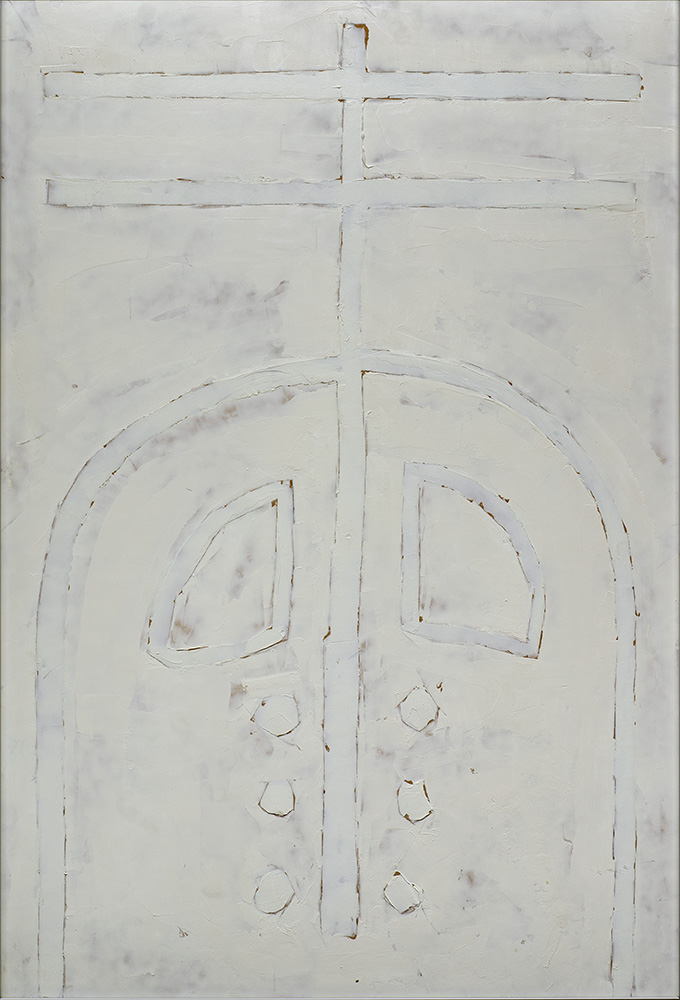
The Hungarian Orb, Byzantine Lights Series No.1
1975, oil on masonite
From Bloore's point of view, the focus on the intuitive self and the spontaneity of the act of painting has undermined the one lasting contribution of the Renaissance, which was the transformation of the artist from a craftsman (homo faber) to a member of the intelligentsia (homo significans). Bloore sees the blossoming of the visual arts in the Renaissance as a direct result of the attraction of the most intelligent and educated members of society to art making. “That was the one area within their culture that could really be opened up."(10) But now, and particularly in North America, an educated artist is suspect. “We operate on the Romantic nineteenth century notion of the artist as a bohemian who cannot benefit from education.”(11)
The focus on the artist as a separate source of meaning is, then, a cul-de-sac. Artist and art are a part of the society in which the art is made, and the values expressed and the success of the expression are dependent on the society. “I am trying to suggest that art and artist are not distinct from society - they are part of it and respond to it... I am trying to suggest that the success or failure of art forms is dependent upon the real, felt, instinctive needs of a culture.”(12)
In his argument that the artist is not separable from his or her society, Bloore attacks the stereotype of the artist as alienated from bourgeois society. The artist has been made to bear the burden of idealization and, in many cases, spiritualization, and, as a consequence, has become marginalized in 20th century society. The fact that artists themselves have internalized and even prided themselves in this exile from the vital life of their own society has been suicidal, tantamount to a destruction of significant art making. Art has, in effect, been placed outside of contemporary dialogue which is basic to its very nature as a language.
Ultimately, and perhaps in some ways lamely, Bloore has to rest his definition of art on the dialogue of the art object with the individual. When pressed, he can only say that art “speaks” to him, no matter from what time or culture. It expresses values indigenous to the era and culture in which it was created and that reach beyond that culture to address relevant universal human values. And, for Bloore, this dialogue is the great dialogue of being human. “You really become proud at times you are a human being...”(13) He would agree with Gadamer in saying, “The essence of what is called spirit lies in the ability to move within the horizon of an open future and an unrepeatable past. Mnemosyne, the muse of memory and recollective appropriation, rules here as the muse of spiritual freedom.”(14)
One of the persistent myths of 20th century art making has been the myth of the avant-garde.(15) The essential nature of art has been interpreted as revolutionary, one movement overturning another, each reaching further along a linear progression toward some undefined future goal. Bloore has argued that to see art as actually revolutionary is a basic misconception. This “tradition of radicalism” ascribed to art (and its practitioners) is, in fact, a failure of revolution and this failure is, in fact, one of the identifying characteristics of Western society.
The phenomenal growth in material wealth and world power of western industrial nations has been built on its overwhelming confidence and readiness to revolutionize its most basic societal concepts. But, revolution itself, that is, political and economic upheaval, had to be avoided and much of the West's progressive legislation has been impelled by the need to avert upheaval. Revolution and change have, thereby, become a cultural myth, acted out by western society in its art in an almost cathartic way. The tradition of radicalism in art is a part of the West's search for a safe way to deal with the unique and innovative and celebrate change without undergoing actual revolution.
Bloore sees art as being essentially conservative, identifying the lasting values of the society, “ ...it has been the means of transmission of certain prized values from one generation to the next in the form of images. Aberrant or radical departures from the norm are atypical. The essence of a culture's art may be found in retained values rather than in departure from certain essential norms."(16) Is this position not totally at odds with the tradition of radicalism? No, for Bloore argues that this tradition is itself one of the values of western society. The artist must seek ways of identifying and giving change itself an iconic presence. Revolution is conserved in 20th century art as a lasting value. A part of this conservatism is the appropriation of old forms to express new meaning.
As a conserving force in society, art is, ironically, used by that society to maintain the status quo. It is used to continue “the sensed pattern of development."(17) No clearer evidence of the basic lack of real revolutionary threat in 20th century art can be found than the fact that this “apparent radicalism is rapidly espoused by the most august, elitist, reactionary institutions within our Western culture - the Art Galleries and Art Museums.” This marginalization of revolution through art has allowed “a small segment in post tribal societies to sustain an assumed position,"(18) while espousing the changes which are the foundations of their position.
The real danger to the arts in the 20th century lies in the concept that there is a discernible, even predictable, progressive and linear history of radicalism which is the essential nature of art (rather than of society). The theorists and the institutions who have espoused this line of argumentation have posed the real threat to art making; it is for Bloore an essentially totalitarian definition of what art is, based on the misconception that art depicting change is itself radical. The star system and consequent intolerance of minor artists in North America result from this basically totalitarian way of thinking. For Bloore, it is the multiplicity of art making which furthers its ability in the 20th century to express the essential values of our society. He speculates: “We tend to search the past for the unique; perhaps we should change directions and search for that which is retained."(19)
Art, then, for Bloore is a visual language which speaks of the most basic and treasured values of the society, culture and place in which it is created. Its quality is a direct result of its ability to transcend its origins and “speak” to humans of other cultures. In these assertions, Bloore proclaims himself as a Modernist, but it is a Modernism which rejects two of its most basic tenets: auto-referentiality and originality (in the sense of stylistic innovation).(20) Oddly enough, Bloore's thought parallels much thinking of recent post modernist and anti-aesthetic writers.(21) In his rejection of the aesthetic as a separate realm, in his central concern with image and painting as visual language, with his rejection of the single, tyrannical “text,” and his interest in non-Western art and the multiplicity of traditions ("voices"), Bloore has raised many of the basic objections of recent critics and artists to the tradition of Modernism.
↑ ↓ ↑ ↓
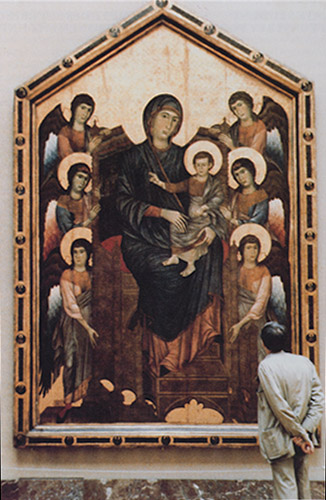
Cimabue, c. 1280, Virgin Enthroned with Angels, Louvre, Paris
Ron Bloore photographed by Chrisula Bloore
with the last great painting of the western world
What is Art History?
Bloore's most remembered proclamation on art history is: “The last great painter of the Western world was Cimabue.” Actually, that is only the first part of what he said. He added, “...until Miro."(22) There is a bit of clever, in-group cross-referencing in the addition, in that Miro had said that all art after Neolithic art was decadent.(23) The proclamation is not, however, an off-the-cuff remark or a flip rejoinder. In 1980, Bloore had an occasion to elaborate on his assertion in a lecture on this theme, which he entitled “Giotto's Error."(24) It contains the best introduction to his thinking on art history.
↑ ↓ ↑ ↓
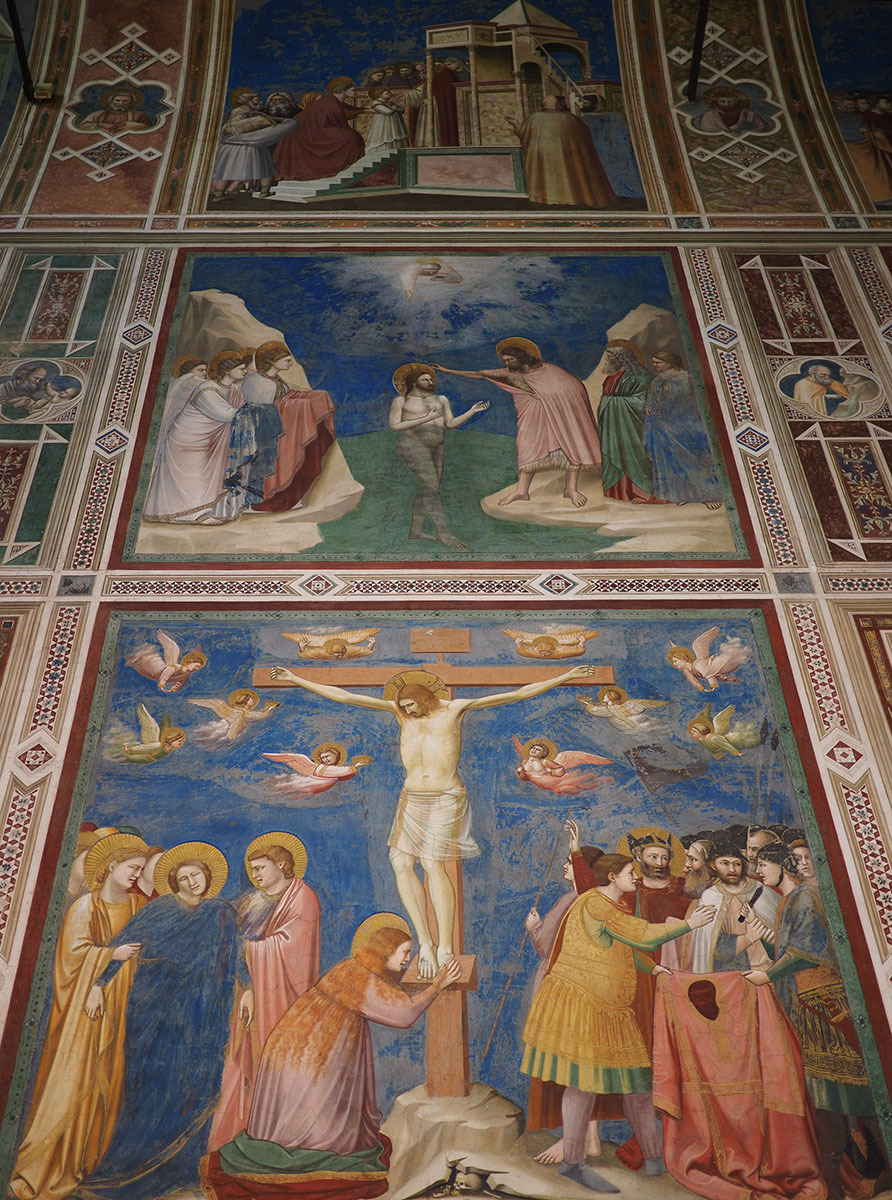
Giotto, c.1305, detail, Scrovegni Chapel, Padua, Italy, photo - H. Roest
Bloore argues that Giotto redirected European painting from the previous 1000 years of Byzantine dominated work, but into a cul-de-sac. Giotto's decisive act, his “error,” was to paint the sky blue. Thus, began Illusionism and the focus of Renaissance painters on the naturalistic representation of perceived reality. It was almost axiomatic that the new illusionists would revive the ancient illusionism of the Greeks and their imitators, the Romans. By denigrating the work of the Middle Ages (the very term itself is a part of the denigration) as barbarous and Gothic because it was not naturalistic, the Renaissance and subsequent generations of European painters set up a standard by which not only medieval art was devalued but world art was measured in terms of its ability to meet the new ideal. Art of other times and cultures became childlike or primitive, not yet having reached a stage in human development in which they knew how to paint and sculpt in a naturalistic manner. Much later, the theory of evolution led theorists to attempt to range art making on an evolutionary time scale, which was constructed on the assumption that there were parallels in the development of children's art and the acquisition of illusionistic representation.
The ultimate failure of Renaissance (and Greek) illusionism lived in this very ideal of recreating on the two-dimensional surface an imitative representation of perceived reality. The more it succeeded, the more it snuffed out the very strength of art making, which is, for Bloore, the miraculous energy and freedom of the imagination. “I know the sky is blue; I prefer to see it golden [and that] requires the imaginative..."(25) No other culture on the planet has allowed itself to be backed into this corner. The best one can say is that naturalism, both in Greece and in post Renaissance Europe, is a cul-de-sac in the history of world art. It was an experiment, which could only be sustained for a relatively short period of time.
Bloore looks to the art of other civilizations not as marginal to European art or as stages in the progress of the human race toward the emergence of European civilization, but as art, pure and simple, and, indeed, art without the element of its own self destruction residing within. They have lived and died with their society and culture, not through self generated criticism.
One of the essays which Bloore regrets he did not write is to trace the decline of landscape painting in Byzantine art; that is, the opposite development to the exhaustively analyzed emergence of the landscape depiction in early Renaissance art. The emphasis on the role of the individual and the focus on the perceived world go hand-in-hand. “Part of the process of individualization was to paint the sky blue, part of the process was to create a picture-window world. The Gods began to die and all men are identifiable and some more memorable than others."(26) Byzantine art moved in the opposite direction, from the individual to the unified community and, therefore, to a powerful, but anonymous expression of the culture and society.
None of these arguments is meant to suggest that Western art is not art, or that it is not fully comparable to the art of other societies. It is great art, however, not because of what theory intended it to be, but because of the imagination and insight of artists. In the longer perspective, however, that intention of representing perceived reality limited it and ultimately prevented it from reaching the level of articulation that can be found in the work of Cimabue.
The revolution of the 20th century in Western art is then, for Bloore, a revolution that frees the Western artist to join with the artists of every age and culture in giving a visual form to the values of Western society and culture which are a part of the treasure of humankind on the planet. Impressionism was both an end and a beginning for Western art: “It was the climax of Renaissance observation and a radical step towards, for the Western world, the truly revolutionary works in the visual arts of, primarily, Piet Mondrian and Wassily Kandinsky and others... who wished to start from ground zero."(27) Mondrian and Kandinsky attempted to shift the focus of Western art away from the material (perceived) world. In this sense, they were spiritual or anti-materialistic. They rightly saw that, paradoxically, art was concerned with the unseen. But the import of their work has not been understood. “Their theories and imaginative solutions were redirected - corrupted - on the one hand into the very epitome of progressive, technological materialism and, in the case of Kandinsky, into a theory of emotive, therapeutic art."(28) His reaction to Greenberg can be clearly seen in the light of the opportunities Bloore thought had been offered by these painters to the 20th century artist and which now seemed threatened. I think it would not be an exaggeration to say that for Bloore there seemed to be a real possibility in Regina in 1960 and 1961 of painting the first great Western paintings since Cimabue. Greenberg's attempt to define painting materialistically, the Abstract Expressionists' focus on the gestural act of the intuitive self - these were the new barbarisms, the corruptions which could destroy the recovery of Western art. Not only were the theories coming from New York wrongheaded, but they were totalitarian ("mainstream"). If they had allowed for a multiplicity of work, if the system of stars ("big attack") had allowed for a spectrum of artists, then it would not have been so dangerous. But, “not straight down the bloody line."(29)
↑ ↓ ↑ ↓
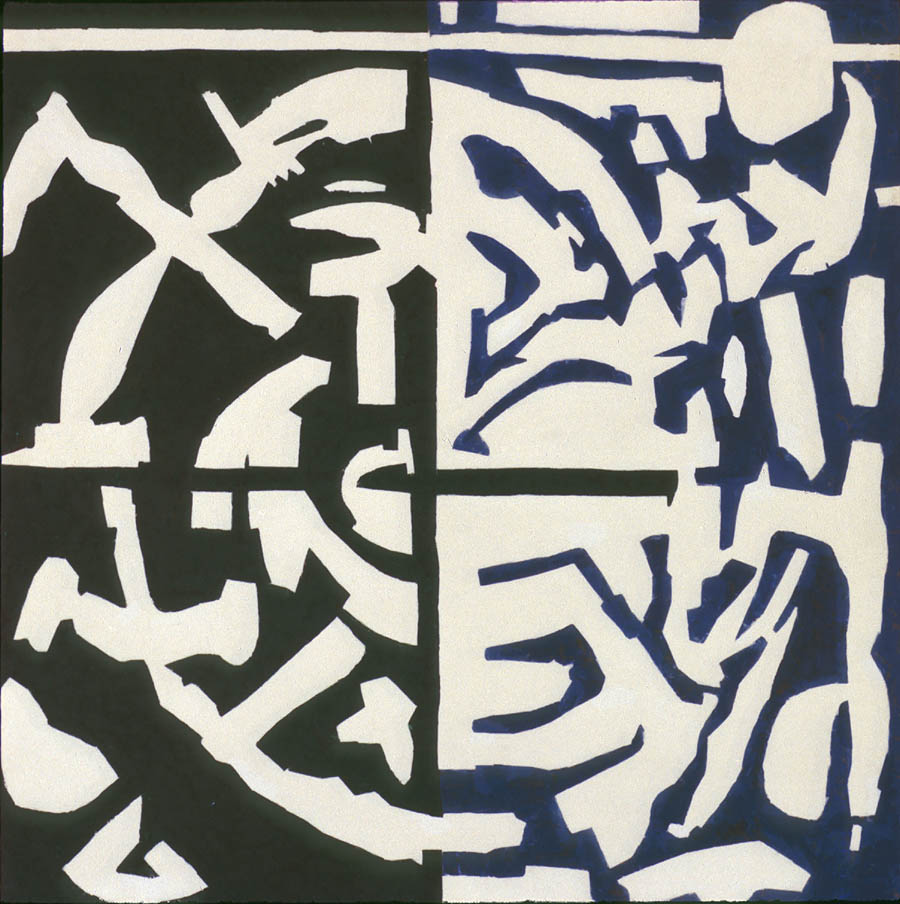
1961, Blue Green White Painting, 122x122cm, Art Gallery of Ontario
What is Canadian art?
The simple answer to the question, what is Canadian art? is: Canadian art is a part of North American art, which, in turn, is part of Western art. Although he raised his voice against Greenberg and the New York artists he sponsored, Bloore has not been anti-American. In a lecture entitled “The Landscape and American Tradition in Canadian Art,” he argues that Canadian art is part, albeit a distinctive part of the art of North America. “...the only really fruitful way for us to approach the study of art in Canada is to cease seeing it in terms of this country alone. Rather we should look at it as part of the North American experience and paradoxically we might so find those characteristics which make it a valid contribution to the enrichment of the human experience."(30) The position of New York in American art has obscured the nature of North American art making. New York City, “which is itself a regional center made international by others imitating it,"(31) seems to play the sort of role on the continent that Paris did in Europe. In fact, the nature of art making in North America is regional and nowhere is this more obvious than in Canada which does not have a city which focuses the art making of the country.
Canadian artists, however, find themselves in the difficult position of having to fulfill some sort of cultural identity related to national aspirations rather than being a part of the natural regional experience. The impact of Canada's populous American neighbour will always exert its influence on every aspect of national life. Thus, not only are Canadian artists held to task for American influences, but they have been given, in the Group of Seven, a so-called national landscape tradition which even on a representational level is only relevant to the part of the country that happens to be covered by the pre-Cambrian shield. The succeeding Canadian Group of Painters attempted to extend this mythic national role of art making by including artists from across the country. In both groups the viability of regional interpretation raised to universal expression was frustrated by nationalist dreams. In reaction, Canadian artists either went to New York and ended up working in an anonymous internationalist style or pursued the local and peculiar to the point of irrelevancy.
And yet, Bloore feels strongly that no artist today can or should isolate him or herself from art that is being made elsewhere. “What is now for some countries will be soon for us."(32) In this perspective, the failure of Canadian artists to develop “a viable tradition” or to resist American influence has a positive side. It can be hoped that the failures themselves amount to a refusal to be defined by an artificial nationalist program and this openness to other art is an awareness of the transcendent demands of art making.
When Bloore turns to the specific developments of Canadian art, he sees the 20th century art of Quebec and Ontario as springing from the same impulse but from basically different traditions.(33) The desire to sweep away the traditions of the Academy came from the European revolution in the visual arts at the end of the 19th and beginning of the 20th century, but the direction art making took in Montreal and Toronto was very different.
In Quebec the ties with France were kept alive and vital from decade to decade and cumulated eventually in the outpourings of the Automatists during and after the Second World War. The society of Quebec was, however, very different from that of either France or Ontario. Here, many artists were important artisans, looked to by the iconodulic Catholic Church for the creation of its visual messages of sin and redemption. It was a society dominated by the Church and its artists were one of the instruments of its control. This situation and background gave the Quebec artist a prominence which has no parallel in English-speaking, Protestant Canada. It also gave the eventual revolt of Borduas and the Automatists that virulence which seems so foreign to Ontario's art history. One of Bloore's pedagogical pleasures was to compare passages of Refus Global of 1948 with those of the 1970 Moyens d'Action of the F.L.Q. manifesto.(34) His argument was that the social and political role of the Quebec artist is a development from an earlier prominence in the religious hegemony. In both cases, the artist assumes a leadership role that does not have a parallel in the rest of Canada.(35)
The direction taken by artists in Toronto was markedly different. Here the artists got stuck in a paradoxical situation which really had no solution. Having no historic or traditional role in society, they attempted to create an art which would be the spiritual embodiment of the national identity. And, at the same time, and paradoxically, they pursued the myth of the rejected artist. In fact, as Bloore cannot resist pointing out, “Probably their desire for rejection [was the] most contemporary aspect about them or their works."(36) The paradox of their search for “unity and collective uniqueness” and their images of isolation and desolation - the lone, windswept pine, the forbidding mountains, the desolate houses - was, at heart, a reflection of the irrelevance of the artist in English speaking Canada. They were not even rejected, but eagerly bought by the National Gallery, and private collectors. And “now school kids are brought in hideous yellow buses in droves [to Kleinberg] to see, as it were, the soul of Canada."(37)
On the West Coast, meanwhile, the work of Emily Carr was developing in a different direction with a totally different relationship to the society and landscape there.(38) This loner immersed herself in the “splendid and awe-inspiring landscape,” but recognized that she was surrounded by the visual art of a magnificent culture, which long pre-dated the European settlements. Here was a radically different experience of living in Canada. “Carr accomplished her new vision, not by copying totem poles on canvas, but by learning something from them of powerful surfaces and spaces, something of the suppression of details in favour of essential shape and movement. In her forest paintings, that approach evolved until form, space and being coalesced into one."(39)
For Bloore, the writing of Canadian art history has been seriously skewed by an attempt to present it in the paradigm of the dominant art center and the succession of stylistic movements. The real visual history of Canada has not been written; “that is, the bold attempt that will try to relate image making, no matter how humble or elitist, to the present experience of having been, or being somewhere in this diversified land."(40) He sees this history as not the narrative of the artist triumphant, but as a tale of frustration and limited accomplishment. The Canadian artist is a “professional without a profession,” most often “poorly trained,” “unpatronized,” and “lacking the time, financial resources and skill to fulfill any obligation to national unity."(41) “The history of art in Canada has been one of breakthrough, rejection, renewed struggle and decline before maturity."(42)
During his years as a professor of art history (he taught some studio painting as well), Bloore drew together his academic training and his art gallery experience into a wide-ranging and insightful view of the development of Western art. It is important to note, however, in all his analysis and theorizing, his goal is not the production of academic texts but the furtherance of making art. Even though he himself ascended the lectern so often, he nevertheless consistently saw too much theorizing as detrimental to art. Indeed, he argued that the opposite was also true - the wretched state of art criticism and theory might be because artists were “talking too much and painting too little."(43)
CH.4→
↑ ↓ ↑ ↓
